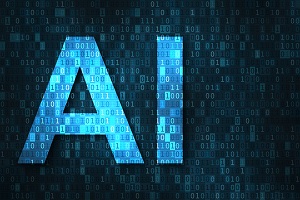The rise of artificial intelligence (AI) is unlocking a wave of new sensor applications and driving market demand for intelligent sensing – the ability to extract insights from sensor data. To guide innovation and investment in this fast-evolving market, the team at Lux Research, a leading provider of tech-enabled research and advisory services for technology innovation, took a deep dive into how and where enhanced AI analytics are rapidly improving the capabilities of software-defined sensors.
The new Lux report, “Intelligent Sensing: The Impact of AI on Sensor Capabilities,” analyzed more than 130,000 patents and used the Lux Tech Signal to identify the impact of AI on a range of sensor types, including optical, mechanical, and acoustic sensors. Several additional drivers, including falling sensor costs and edge computing, are also creating new opportunities for intelligent sensing. The report also evaluates the application of AI-defined sensor innovations across industries, revealing the leading edge for intelligent sensing.
“With the advent and proliferation of artificial intelligence (AI) technologies – concentrated in machine learning – the capabilities of software-defined sensors are increasing at a breakneck pace,” said Cole McCollum, Research Associate in Sensors at Lux Research and lead author of this report. “AI for analyzing sensor data enables far more robust predictions and classifications using sensor signals compared to other methods like physics-based models. We are already seeing this innovation potential with the development of applications ranging from medical diagnosis to predictive maintenance.”

The report provides a detailed analysis of AI innovation activity across sensor types and industry segments. Some of the key takeaways include:
- Consumer applications of AI-defined sensors see the strongest amount of overall innovation, particularly in improved human-machine interfaces, based on patent analysis.
- Following consumer applications, industrial and health-related applications see moderate amounts of innovation. Automotive applications see growing activity but have the lowest relative amount of overall innovation compared to the other three verticals.
- Optical sensing – dominated by image sensors – sees the most activity across all industries.
- Following optical sensing, mechanical and acoustic sensing see the next-highest levels of innovation with respect to AI.
- Patent activity in other sensors, such as those for chemical, magnetic, and electrical properties, tends to be concentrated in specific industries (e.g., magnetic in consumer and electrical in health).
Lux’s “Intelligent Sensing: The Impact of AI on Sensor Capabilities” report also includes a detailed look at market and technology drivers for AI-defined sensors, top use cases and key players by vertical market, and a heat map that tracks adoption of sensors across industry segments.
Sign up for the free insideAI News newsletter.




